Illinois
people
a confederation of small Algonquian (Algonquian languages)-speaking North American Indian tribes originally spread over what are now southern Wisconsin and northern Illinois and parts of Missouri and Iowa. The best-known of the Illinois tribes were the Cahokia, Kaskaskia, Michigamea, Peoria, and Tamaroa.
Like other Northeast Indians (Northeast Indian), the Illinois traditionally lived in villages, their dwellings covered with rush mats and housing several families each. The Illinois economy combined agriculture with foraging; women cultivated corn (maize) and other plant foods, small parties took forest mammals and wild plants throughout the year, and most members of a given village participated in one or more winter bison hunts on the prairie. Little is known of Illinois social organization, but it was probably similar to that of the Miami, with a civil chief elected from among a village council and a war chief chosen according to his ability to lead raids.
By the middle of the 17th century, most of the Illinois people were living along the Illinois River from Starved Rock to the Mississippi, having moved there because of harassment by the Dakota Sioux, Fox, and other northern tribes. Iroquois raids greatly reduced their numbers, and the introduction of liquor by French traders further weakened the tribe. The murder of the Ottawa chief Pontiac by an Illinois individual provoked the vengeance of several northern Algonquian tribes, further reducing the Illinois population. The survivors took refuge with French settlers in Kaskaskia, while the Sauk, Fox, Kickapoo, and Potawatomi took most of the remaining Illinois territory. In 1832 the Illinois sold the lands they had retained, moving to Kansas and then to Indian Territory (present-day Oklahoma).
Early 21st-century population estimates indicated more than 1,500 individuals of Illinois descent.
state, United States
Introduction
Illinois, flag of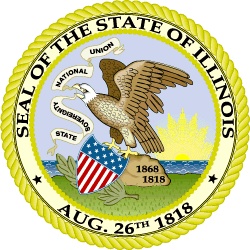
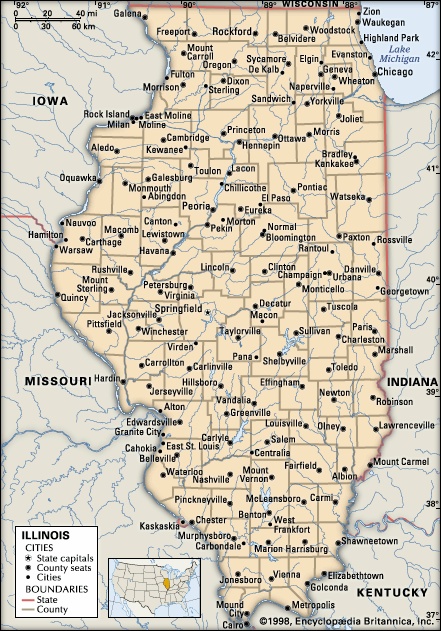
 constituent state of the United States of America (United States). It stretches southward 385 miles (620 km) from the Wisconsin border in the north to Cairo in the south. In addition to Wisconsin, the state borders Lake Michigan (Michigan, Lake) to the northeast, Indiana to the east, Kentucky to the southeast, Missouri to the west, and Iowa to the northwest. Illinois was named for the Illinois Indians. The capital is Springfield, in the west-central part of the state.
constituent state of the United States of America (United States). It stretches southward 385 miles (620 km) from the Wisconsin border in the north to Cairo in the south. In addition to Wisconsin, the state borders Lake Michigan (Michigan, Lake) to the northeast, Indiana to the east, Kentucky to the southeast, Missouri to the west, and Iowa to the northwest. Illinois was named for the Illinois Indians. The capital is Springfield, in the west-central part of the state.


 constituent state of the United States of America (United States). It stretches southward 385 miles (620 km) from the Wisconsin border in the north to Cairo in the south. In addition to Wisconsin, the state borders Lake Michigan (Michigan, Lake) to the northeast, Indiana to the east, Kentucky to the southeast, Missouri to the west, and Iowa to the northwest. Illinois was named for the Illinois Indians. The capital is Springfield, in the west-central part of the state.
constituent state of the United States of America (United States). It stretches southward 385 miles (620 km) from the Wisconsin border in the north to Cairo in the south. In addition to Wisconsin, the state borders Lake Michigan (Michigan, Lake) to the northeast, Indiana to the east, Kentucky to the southeast, Missouri to the west, and Iowa to the northwest. Illinois was named for the Illinois Indians. The capital is Springfield, in the west-central part of the state.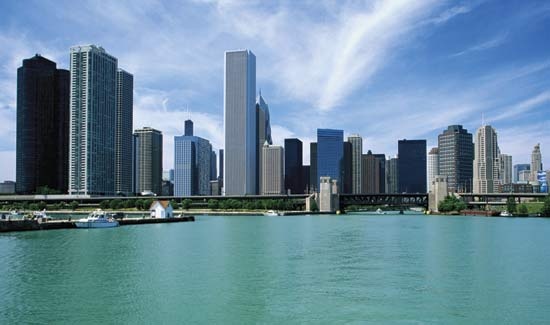 Admitted as the 21st member of the union on Dec. 3, 1818, Illinois lies within both the so-called old industrial belt and the fertile agricultural heart of the country. The presence of Chicago, one of the country's most prominent cities, creates sharp distinctions between the state's largely urban and suburban northeast and the more evenly balanced urban-rural population downstate. In political life, Illinois is divided between Cook county (which contains much of the Chicago metropolitan area) and “downstate”—that is, all the other counties, even those north of Cook, such as Lake county. Because of its great length, Illinois exhibits qualities characteristic of both the Northern and Southern regions of the United States; although its northern portion touches the Upper Midwest, its southern point is actually farther south than Richmond, Va., and has great affinities with neighbouring Kentucky and Missouri. Further contrasts derive from the racial and ethnic complexity of the population.
Admitted as the 21st member of the union on Dec. 3, 1818, Illinois lies within both the so-called old industrial belt and the fertile agricultural heart of the country. The presence of Chicago, one of the country's most prominent cities, creates sharp distinctions between the state's largely urban and suburban northeast and the more evenly balanced urban-rural population downstate. In political life, Illinois is divided between Cook county (which contains much of the Chicago metropolitan area) and “downstate”—that is, all the other counties, even those north of Cook, such as Lake county. Because of its great length, Illinois exhibits qualities characteristic of both the Northern and Southern regions of the United States; although its northern portion touches the Upper Midwest, its southern point is actually farther south than Richmond, Va., and has great affinities with neighbouring Kentucky and Missouri. Further contrasts derive from the racial and ethnic complexity of the population.These internal divisions, while not unique to Illinois, perhaps became magnified through the state's critical role in the economic and political life of the country. Rich in coal and petroleum reserves and ideally located for the acquisition of raw materials and distribution of finished goods, Illinois ranks among the top states in value of exports, agricultural income, and value added by manufacturing. Chicago is a national railroad hub, the city's O'Hare International Airport is among the world's busiest, and Illinois highways and waterways are thick with commercial traffic. Politically, Illinois has tended to be a “swing state,” its votes often mirroring fluctuating social tensions that underlie the growing, but unevenly distributed, economic prosperity. Area 57,915 square miles (149,999 square km). Pop. (2000) 12,419,293; (2007 est.) 12,852,548.
Land (Illinois)
Relief and drainage

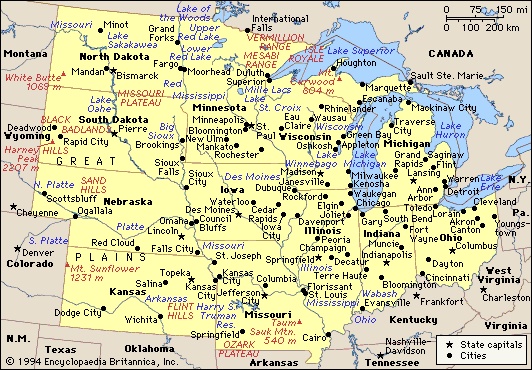
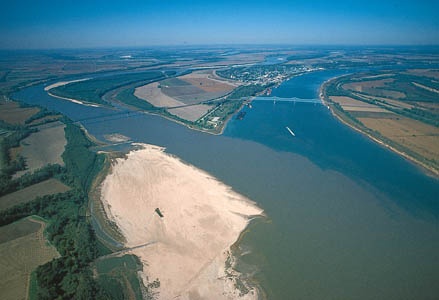 Much of Illinois's land is flat, with irregular plains in the western, northern, and southern sections. This area once constituted a vast tallgrass prairie, virtually all of which was converted to farmland or urban sprawl. The unglaciated southernmost part of the state is in many ways out of character with the rest of Illinois. Shawnee National Forest, the only large tract of federally administered land in Illinois, covers a great part of this region. Southern Illinois consists of gently sloping, open hills. Rolling hills in the northwestern corner include the state's highest point, Charles Mound, which is 1,235 feet (376 metres) above sea level. The statewide average elevation is about 600 feet (180 metres).
Much of Illinois's land is flat, with irregular plains in the western, northern, and southern sections. This area once constituted a vast tallgrass prairie, virtually all of which was converted to farmland or urban sprawl. The unglaciated southernmost part of the state is in many ways out of character with the rest of Illinois. Shawnee National Forest, the only large tract of federally administered land in Illinois, covers a great part of this region. Southern Illinois consists of gently sloping, open hills. Rolling hills in the northwestern corner include the state's highest point, Charles Mound, which is 1,235 feet (376 metres) above sea level. The statewide average elevation is about 600 feet (180 metres).The deep black soil of much of northern and central Illinois has unusual richness, and its quality for agriculture is among the finest in the world. The soils of the southern third of the state are far less suited for farming.
Illinois is drained by as many as 900 streams emptying mostly into the Mississippi River system. The Chicago (Chicago River) and Calumet rivers—originally flowing into the St. Lawrence (Saint Lawrence River and Seaway) by way of Lake Michigan—have been altered through the construction of canals to drain into the Mississippi by way of the Illinois River, which roughly bisects the northern portion of the state from northeast to southwest. The Ohio River joins the Mississippi at the state's southern tip near Cairo, an area known as “Little Egypt.”
Water lies under all of Illinois in natural underground reservoirs. Chicago and many of its suburbs draw their water from Lake Michigan, but most of northern Illinois's water is pumped from underground wells. Some regions face a dwindling water supply; around Joliet the water table has been lowered hundreds of feet since the early 20th century. Most of the state's lakes are man-made.
Climate
Because of its geographic position and its long north-south axis, Illinois experiences wide regional variations in temperature. Across the state, seasonal temperature variation also tends to be great, with typically cold, snowy winters and hot summers; extremes are somewhat ameliorated around Lake Michigan. Mean winter temperatures are about 22 °F (−6 °C) in the north and 37 °F (3 °C) in the south; summer equivalents, respectively, are 74 °F (23 °C) and 80 °F (27 °C). Mean annual precipitation in the north is about 34 inches (864 mm) and in the south 46 inches (1,170 mm). The growing season varies from 205 days in the south to 155 days in the northernmost counties.
Plant and animal life
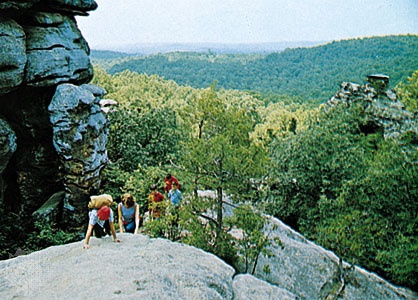 Illinois vegetational regions are separated into the tallgrass prairie of northern and central Illinois and the oak-hickory forest of the western and southern regions. Only tiny fragments of the original tallgrass prairie have been preserved, and some small areas have been reconstructed; the largest restored prairie in the state is Midewin National Tallgrass Prairie, near Joliet. Before European settlers—first the French and then the English—moved in beginning in the 17th century, oak-hickory forests also prevailed in the north. The settlers, needing wood for fuel and construction material and the lumbering industry, stripped most of the trees, which left only 10 percent forest cover in Illinois. More than 6,200 square miles (16,000 square km) of forests remain, some 1,100 square miles (2,800 square km) of them in Shawnee National Forest. The state's length gives it an unusual variety of Northern and Southern plant life. Both Northern and Southern wildflowers grow in Illinois, as do a variety of trees, such as white pines, tamaracks, walnuts, cypresses, and tupelos.
Illinois vegetational regions are separated into the tallgrass prairie of northern and central Illinois and the oak-hickory forest of the western and southern regions. Only tiny fragments of the original tallgrass prairie have been preserved, and some small areas have been reconstructed; the largest restored prairie in the state is Midewin National Tallgrass Prairie, near Joliet. Before European settlers—first the French and then the English—moved in beginning in the 17th century, oak-hickory forests also prevailed in the north. The settlers, needing wood for fuel and construction material and the lumbering industry, stripped most of the trees, which left only 10 percent forest cover in Illinois. More than 6,200 square miles (16,000 square km) of forests remain, some 1,100 square miles (2,800 square km) of them in Shawnee National Forest. The state's length gives it an unusual variety of Northern and Southern plant life. Both Northern and Southern wildflowers grow in Illinois, as do a variety of trees, such as white pines, tamaracks, walnuts, cypresses, and tupelos.Before 1800 abundant wildlife roamed the prairies and forests, but bison, bears, wolves, mountain lions (pumas), porcupines, and elk have disappeared. Deer became extinct in 1910, but in 1933 the state department of conservation placed small herds that established a growing deer population. By the early 21st century the number of white-tailed deer in the state had reached into the hundreds of thousands. Coyotes and foxes can be found in woodlands and other natural areas and, increasingly, in and around urban areas. Game birds such as quail and pheasant are not as plentiful as in previous times, but waterfowl are abundant during the spring and fall migrations. Pollution has nearly wiped out many species of fish, but bullheads, carp, catfish, white and yellow bass, and walleye still abound.
People
Population (Illinois) composition
 After most of the French had left Illinois following the French and Indian War (1754–63), English settlers and colonists from Virginia, Tennessee, and Kentucky moved in. People from New England and New York arrived by way of the Great Lakes or the Cumberland (National) Road (Cumberland Road). When the United States experienced great waves of European immigration beginning in the 1840s, large numbers of Germans and Irish arrived in northern Illinois; and, from the 1880s until World War I, immigrants came from Poland, Hungary, Italy, Norway, Sweden, Austria, and Russia. In 1910 Germans ranked first in number among the foreign-born and Austrians and Hungarians second, followed by Russians, Scandinavians, Irish, and Italians. Although the Jewish population had become well established in the 19th century, its numbers swelled further prior to World War II, particularly in the Chicago area. Following the war, whites from Appalachia and Native Americans sought employment in the cities. More-recent immigrants have tended to come from diverse origins, with Asians and Hispanics constituting increasingly influential sectors of the population.
After most of the French had left Illinois following the French and Indian War (1754–63), English settlers and colonists from Virginia, Tennessee, and Kentucky moved in. People from New England and New York arrived by way of the Great Lakes or the Cumberland (National) Road (Cumberland Road). When the United States experienced great waves of European immigration beginning in the 1840s, large numbers of Germans and Irish arrived in northern Illinois; and, from the 1880s until World War I, immigrants came from Poland, Hungary, Italy, Norway, Sweden, Austria, and Russia. In 1910 Germans ranked first in number among the foreign-born and Austrians and Hungarians second, followed by Russians, Scandinavians, Irish, and Italians. Although the Jewish population had become well established in the 19th century, its numbers swelled further prior to World War II, particularly in the Chicago area. Following the war, whites from Appalachia and Native Americans sought employment in the cities. More-recent immigrants have tended to come from diverse origins, with Asians and Hispanics constituting increasingly influential sectors of the population.African Americans have lived in Illinois since the first slaves were brought there in 1719, but their numbers remained low until the American Civil War (1861–65). In 1870 blacks numbered 29,000, and by 1910 migrant blacks had settled in the southern counties and totaled 109,000. With World War I there began the Great Migration—a steady flow of African Americans from the South to the major industrial centres of the North. By the early 21st century African Americans made up about one-sixth of the population of Illinois, with four-fifths living in Chicago and Cook county. A growing Hispanic population comprised another one-sixth of the state's population, and Asian Americans constituted a smaller fraction.
The religious diversity in Illinois reflects the different origins of the people themselves. In the early 1800s Methodist circuit riders (circuit rider) nourished tiny congregations throughout Illinois, and Methodists remain strong today. The Irish, some Germans, and later southern and eastern Europeans brought the Roman Catholic faith to the larger cities, and the Roman Catholic archdiocese of Chicago is the country's second largest in membership. Also serving the city are scores of Protestant churches, Eastern Orthodox churches, and Jewish synagogues. Muslims, Buddhists, and followers of Bahāʾī also have centres of worship.
Illinois has population characteristics similar to those of the country as a whole: cities continue to lose whites to suburban areas, while both the number and proportion of African Americans and Latinos within the larger cities have increased.
Settlement patterns
Aside from the aforementioned distinction between the Chicago area and downstate derived from population patterns, Illinois can be separated into three broad regions that differ markedly in their economic and social characteristics. A highly urbanized band—with extensive farming areas in between—reaches across the state in the north from Chicago to the Rock Island– Moline complex on the Mississippi and includes Kankakee, Joliet, and Rockford. Most farmland is located within easy reach of urban centres. The region is characterized by heavy industry around Chicago and the other centres, with a large and rapidly expanding suburban complex of shopping facilities, single-family dwellings, and apartment houses.
The central third of the state includes the cities of Springfield, Bloomington and Normal, Peoria, Champaign and Urbana, Danville, Galesburg, Quincy, and Decatur. The economic base of the region is agriculture. Some cities (notably Peoria and Decatur) support such industries as the manufacture of earth-moving equipment, farm machinery, and construction equipment; others are centred on institutions such as the state government complex in Springfield and the University of Illinois in Champaign-Urbana. Decatur is now the soybean-processing centre for the country and has one of the largest processing plants in North America; it is also a centre of the ethanol industry. The focus of communications and transportation is scattered among four or five metropolitan areas. The character of the people tends to remain rural or small-town, with a highly developed sense of tradition and history.
St. Louis (Saint Louis), Mo., dominates much of southern Illinois. East St. Louis (East Saint Louis), Belleville, Alton, and Granite City are medium-sized cities, but they are located in only two counties, leaving the rest of the area mostly rural. Because this region of Illinois was settled earliest, most of its communities have longer historical traditions than do their northern neighbours. Southern Illinois has coal mines, oil wells, and Shawnee National Forest, which covers parts of 10 counties. The region is Southern mountain in character, and the pace of living tends to be slower than in the north because of fewer cities and a somewhat depressed economy. The campuses of Southern Illinois University in Carbondale and Edwardsville have provided economic and cultural stimulation to the region.
Economy
The diversified nature of its economy—strength in manufacturing, agriculture, finance, mining, transportation, government, technology, and services (including tourism)—makes Illinois a microcosm of the national economy. This diversity generally provides greater stability at times when other states with more narrowly based industries suffer.
State and private business organizations give considerable attention to expanding Illinois's balanced economy. The Illinois Department of Commerce and Community Affairs has offices in foreign cities to stimulate the importation of Illinois products. The state offers services for the development of business enterprises by women and ethnic minorities and disseminates information to private enterprises on new technological developments. Private organizations have played a significant part in attracting industry, in the development or rehabilitation of downtown areas, and in technological advancement.
Trade unions are relatively strong in Illinois, both politically and economically, but neither they nor employer groups are strong enough to impose their will on the other. Mediation in labour-management disputes by public officials is a frequent occurrence.
Agriculture
 Illinois's greatest natural resource is its rich black soil. Farms cover about three-fourths of the state's area. From year to year Illinois usually ranks among the top states in soybean and corn (maize) production. Illinois is also noted for pork and dairy products, grains, and livestock. Family-owned farms account for the greatest percentage of farms in Illinois.
Illinois's greatest natural resource is its rich black soil. Farms cover about three-fourths of the state's area. From year to year Illinois usually ranks among the top states in soybean and corn (maize) production. Illinois is also noted for pork and dairy products, grains, and livestock. Family-owned farms account for the greatest percentage of farms in Illinois.Resources and power
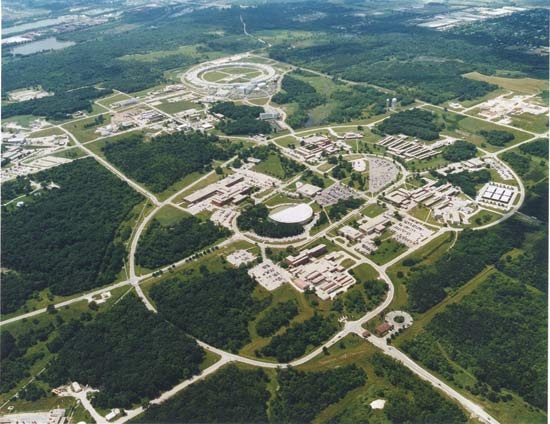 Illinois ranks among the top states in the country in reserves of coal overall and accounts for one-fourth of the country's reserves of bituminous coal. Illinois's bituminous coal reserves contain more energy than the petroleum reserves in Saudi Arabia. Peak petroleum production was reached in 1940 and has declined since, but Illinois has continued to be a regional leader in petroleum refining. The state is one of the country's top producers of ethanol.
Illinois ranks among the top states in the country in reserves of coal overall and accounts for one-fourth of the country's reserves of bituminous coal. Illinois's bituminous coal reserves contain more energy than the petroleum reserves in Saudi Arabia. Peak petroleum production was reached in 1940 and has declined since, but Illinois has continued to be a regional leader in petroleum refining. The state is one of the country's top producers of ethanol.Nuclear power and coal each generate about half the state's electrical power. Illinois has 11 nuclear power reactors, more than any other state. Argonne National Laboratory, near Lemont, and Fermi National Accelerator Laboratory (Fermilab), in Batavia, are major research and development installations of the U.S. Department of Energy.
Manufacturing
Illinois ranks high among the states in the manufacture of food products, chemicals, fabricated metals, computer and electronic products, and rubber products, as well as in the number of printing and publishing establishments. It is also among the top producers of nonelectrical machinery, which accounts for the largest share of its foreign exports. Industrial parks are scattered throughout the state, the greatest concentration being in the Chicago metropolitan area.
Beginning in the second half of the 20th century, Illinois, like many other states across the country, experienced an ongoing decline in manufacturing. Hundreds of thousands of jobs were lost as companies moved overseas and to states where business costs were lower. However, manufacturing still remains a significant sector of the state's economy.
Finance
 For decades Illinois had a high number of independent banks, the result of a long-standing state prohibition against branch banking that had been established by the constitution of 1870. The issue produced complex political battles in Springfield, with frequent charges and occasional exposures of political graft connected with it, even after the late 1960s, when legislation began to loosen the prohibition. Finally, state and federal laws passed in the mid-1990s removed restrictions against branching both within the state and across state lines, and by the early 21st century branch banks had proliferated in Illinois.
For decades Illinois had a high number of independent banks, the result of a long-standing state prohibition against branch banking that had been established by the constitution of 1870. The issue produced complex political battles in Springfield, with frequent charges and occasional exposures of political graft connected with it, even after the late 1960s, when legislation began to loosen the prohibition. Finally, state and federal laws passed in the mid-1990s removed restrictions against branching both within the state and across state lines, and by the early 21st century branch banks had proliferated in Illinois.Illinois is a major insurance centre. Chicago is the seat of the seventh district of the Federal Reserve System and is home to the Chicago Stock Exchange, the Chicago Board Options Exchange, and the Chicago Board of Trade, the latter of which merged in 2007 with the Chicago Mercantile Exchange, a pioneer in the futures market. The Board of Trade is the country's oldest commodity market, dealing in contracts for a wide variety of products, including corn, grains, soybeans and their products, and precious metals.
Transportation
 Illinois is a national transportation hub. Few comparable areas are served by so many means of transportation. The state's freight and passenger rail networks, radiating from Chicago, are among the most extensive in the country. Chicago is a major centre for Amtrak service and of a large commuter rail system. Chicago is also one of the principal hubs of the national road system, and each of the state's major urban areas is served by at least one interstate highway.
Illinois is a national transportation hub. Few comparable areas are served by so many means of transportation. The state's freight and passenger rail networks, radiating from Chicago, are among the most extensive in the country. Chicago is a major centre for Amtrak service and of a large commuter rail system. Chicago is also one of the principal hubs of the national road system, and each of the state's major urban areas is served by at least one interstate highway.Water transportation became more efficient when Lake Michigan was connected to the Mississippi River in 1848 by means of the Illinois and Michigan Canal, linking the Chicago and Illinois rivers. Completion of the St. Lawrence Seaway (Saint Lawrence River and Seaway) in 1959 stimulated the expansion of the Port of Chicago. Oceangoing freighters dock at Calumet Harbor in South Chicago.
Chicago has two major airports, O'Hare International—one of the busiest in the country—and Midway; a third airport, Meigs Field, which served small planes on the Chicago lakefront, was closed down in 2003 by Mayor Richard M. Daley (Daley, Richard M.). Regional airports are located at Champaign-Urbana, Bloomington-Normal, Springfield, and other cities. In all, about 700 airports are located throughout the state.
Government and society
Constitutional framework

 The first state constitution was adopted in 1818, the second in 1848, and the third in 1870, which remained in effect for 100 years. The current constitution, adopted in December 1970, added new concepts to the Illinois Bill of Rights, forbidding discrimination on the basis of race, creed, colour, national ancestry, or sex in employment or in housing and prohibiting discrimination against the physically or mentally handicapped.
The first state constitution was adopted in 1818, the second in 1848, and the third in 1870, which remained in effect for 100 years. The current constitution, adopted in December 1970, added new concepts to the Illinois Bill of Rights, forbidding discrimination on the basis of race, creed, colour, national ancestry, or sex in employment or in housing and prohibiting discrimination against the physically or mentally handicapped.The executive branch consists of the governor, lieutenant governor, secretary of state, attorney general, treasurer, and comptroller, all elected to unlimited four-year terms. The governor has the power to reorganize state government and also has a line-item veto.
Illinois's General Assembly comprises a 59-member Senate and a 118-member House of Representatives. Senators serve two four-year terms and one two-year term each decade; the relative timing of these terms varies by legislative district. Representatives serve two-year terms and are elected from single-member districts.
The judiciary is headed by the seven-member Supreme Court, whose justices are elected to 10-year terms in partisan contests (i.e., they stand for election as members of a political party). Beneath the Supreme Court are appellate and circuit courts, the members of which are also elected (to 10-year and 6-year terms, respectively). There is also the Court of Claims, which hears claims involving the state. Judges run for retention on their records, needing to secure three-fifths support of voters in a nonpartisan election to remain in office.
Illinois has three levels of local government—county, township, and municipal—plus many special districts. For example, Illinois is one of the few states across the country that have mosquito abatement districts. Counties are classed as township and non-township, with Cook county, containing Chicago and most of its major suburbs, in a class by itself. The 85 township counties are governed by boards of commissioners elected from districts or at large; the 17 non-township counties have 3-member boards elected at large, and Cook county has a 17-member board, with 11 members from Chicago and 6 from the suburbs.
Townships act primarily as road-maintenance and general-assistance units. The annual town meeting, a gathering of all qualified voters—though attendance is usually low—is a feature of local government that remains from earlier centuries. Municipal government usually is of the mayor-council type, though other forms are permitted; many villages utilize a president-trustee system.
Overall, Illinois has more than 8,000 units of local government, resulting in overlapping administrative, educational, park, fire, sanitary, sewage, drainage, and other special districts. Most were formed to circumvent restrictions in the old constitution but have become self-perpetuating. Patterns of taxation are similarly mixed. State taxes include those on personal and business income, cigarettes, liquor, and retail sales. Real-estate taxes contribute the major local support for schools and other services, though the state supplies “no-strings-attached” grants to municipalities and counties from income-tax revenues.
Health and welfare
Health and welfare assistance and services are provided by both state and local governments, most of which receive funds from diverse federal agencies. Representatives of the low-income groups most requiring the services have been in frequent conflict with local officials over the question of who is to administer the funds and the programs.
The Illinois Housing Development Authority finances the creation of affordable housing for the state's residents, and the many municipal and county agencies administer federal public-housing programs. Chicago's public housing is primarily a municipal responsibility, with federal aid.
Statewide, welfare assistance to poor families, dependent children, and other groups has met resistance in the legislature in Springfield. Independent attempts to establish free neighbourhood medical clinics in low-income African American and Spanish-speaking areas of cities often have encountered local hostility and inadequate funding.
Medical facilities throughout most of Illinois are among the finest in the country, and medical research plays an increasingly important role in the state's economy. Chicago is a centre for medical and psychiatric services and training, but economically depressed areas continue to be underserved.
Although per capita income in Illinois is among the highest in the country, problems of poverty continue to plague the state. Some progress was made in reducing the welfare rolls through a jobs incentive initiative during Gov. Jim Edgar's administration (1991–99).
Education
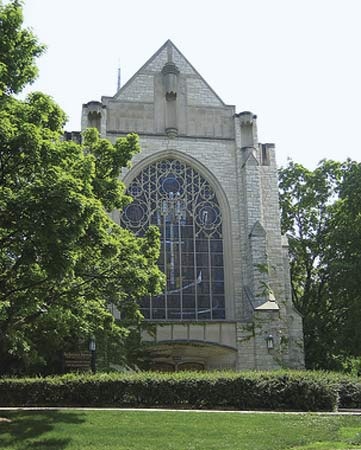 The Illinois State Board of Education was created in 1975 after the 1970 constitution directed that responsibility for public elementary and secondary education be transferred from an elected superintendent to an appointed board of citizens. The board's nine members are appointed by the governor with the consent of the Senate and serve no more than two consecutive four-year terms. The issue of funding Chicago city schools was formerly a bitter point of contention between the city and the state, though the conflict diminished somewhat with some improvements in Chicago city schools beginning in the late 20th century.
The Illinois State Board of Education was created in 1975 after the 1970 constitution directed that responsibility for public elementary and secondary education be transferred from an elected superintendent to an appointed board of citizens. The board's nine members are appointed by the governor with the consent of the Senate and serve no more than two consecutive four-year terms. The issue of funding Chicago city schools was formerly a bitter point of contention between the city and the state, though the conflict diminished somewhat with some improvements in Chicago city schools beginning in the late 20th century.In the field of higher education, Illinois offers a wide array of opportunity, and its academic excellence is often noted. Sectarian and nonaffiliated private institutions are scattered throughout the state. The University of Chicago (Chicago, University of) (chartered 1890) is respected as one of the finest institutions of higher learning in the country. Northwestern University (1851), in Evanston, is also nationally renowned and has a distinguished faculty in several areas, as does the Illinois Institute of Technology (formed by the merger of two earlier institutions in 1940), in Chicago. The state system of higher education includes eight colleges and universities anchored by the University of Illinois (Illinois, University of) (1867), with campuses at Champaign-Urbana, Chicago, and Springfield; one of the Big Ten (Big Ten Conference) schools, it is also a major research institution. Among the other state schools are Southern Illinois University (SIU; 1869), with campuses in Carbondale and Edwardsville, and Illinois State University (1857) in Normal. There are also more than 60 community colleges and technical schools in Illinois.
Cultural life
Cultural institutions
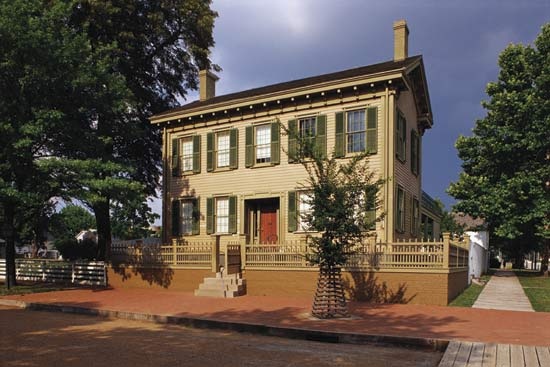 Inevitably, the influence of Chicago, a major artistic centre, tends to dominate the cultural landscape of Illinois. In the 1910s and '20s the city was a hub of literary activity, and today the holdings of its public and private institutional libraries are enormous. Its Art Institute of Chicago, Museum of Science and Industry (Science and Industry, Museum of), Field Museum of Natural History, and other civic landmarks have collections and research facilities among the most complete in the world. Before the development of the Hollywood film industry beginning about 1910, Chicago was the centre of American moviemaking. The city's theatrical community offers a broad spectrum of standard and avant-garde works. Dance is widely available, Chicago's symphony orchestra and opera company are among the premier American musical organizations, and the city is known as one of the great centres of jazz and blues music. In the early 20th century, Chicago architects began designing commercial and private buildings that became models for modern architecture throughout the world; today Chicago is widely considered to be one of the most exciting cities in the country architecturally.
Inevitably, the influence of Chicago, a major artistic centre, tends to dominate the cultural landscape of Illinois. In the 1910s and '20s the city was a hub of literary activity, and today the holdings of its public and private institutional libraries are enormous. Its Art Institute of Chicago, Museum of Science and Industry (Science and Industry, Museum of), Field Museum of Natural History, and other civic landmarks have collections and research facilities among the most complete in the world. Before the development of the Hollywood film industry beginning about 1910, Chicago was the centre of American moviemaking. The city's theatrical community offers a broad spectrum of standard and avant-garde works. Dance is widely available, Chicago's symphony orchestra and opera company are among the premier American musical organizations, and the city is known as one of the great centres of jazz and blues music. In the early 20th century, Chicago architects began designing commercial and private buildings that became models for modern architecture throughout the world; today Chicago is widely considered to be one of the most exciting cities in the country architecturally.Communities outside the Chicago area have thriving cultural lives as well, often revolving around the theatre, music, art, or various science departments of the many colleges and universities or around community theatre or musical organizations. Belleville boasts the second oldest symphony orchestra in the country, the Belleville Philharmonic, founded in 1867. Several communities have symphony orchestras that give small stipends to local performers, who are supplemented by full-time professional musicians at higher salaries. The Elgin Symphony Orchestra is regarded as one of the finest small community ensembles in the region. The Eagle's Nest Art Colony, founded in Oregon, Ill., in 1898 by sculptor Lorado Taft (Taft, Lorado), included many well-known Illinois artists; it was acquired by Northern Illinois University in 1951. The Illinois Arts Council was created by the state in 1965 as the primary agency to fund statewide or local programs in the arts. It is supported by the state and the National Endowment for the Arts.
 Points of historical importance dot the state. Among old cities on the Mississippi are Galena, which preserves the home of Pres. Ulysses S. Grant (Grant, Ulysses S.), and Nauvoo, which was founded in 1839 by the Mormons (Mormon) and was their point of departure in 1846 on the trek that took them to Utah. New Salem, near Springfield, is a preservation of the community of log cabins in which Abraham Lincoln (Lincoln, Abraham) spent much of his young manhood. Throughout central Illinois the Lincoln Trail joins places associated with the president, including his home in Springfield and the sites of his 1858 senatorial campaign debates with Sen. Stephen A. Douglas (Douglas, Stephen A) (see Lincoln-Douglas debates). Oak Park, home of the pioneering modern architect Frank Lloyd Wright (Wright, Frank Lloyd), contains much of his early work.
Points of historical importance dot the state. Among old cities on the Mississippi are Galena, which preserves the home of Pres. Ulysses S. Grant (Grant, Ulysses S.), and Nauvoo, which was founded in 1839 by the Mormons (Mormon) and was their point of departure in 1846 on the trek that took them to Utah. New Salem, near Springfield, is a preservation of the community of log cabins in which Abraham Lincoln (Lincoln, Abraham) spent much of his young manhood. Throughout central Illinois the Lincoln Trail joins places associated with the president, including his home in Springfield and the sites of his 1858 senatorial campaign debates with Sen. Stephen A. Douglas (Douglas, Stephen A) (see Lincoln-Douglas debates). Oak Park, home of the pioneering modern architect Frank Lloyd Wright (Wright, Frank Lloyd), contains much of his early work.Sports and recreation
Illinois's professional sports teams, centred in Chicago, enjoy devoted fan support and, in several cases, legendary status. They include the Bears (gridiron football), Bulls and Sky (men's and women's basketball, respectively), Blackhawks (ice hockey), Cubs and White Sox (baseball), and Fire (football 【soccer】). Across the state, many sports fans also follow the university-level teams with almost equal interest.
Among Illinois's finest recreational offerings are the sandy beaches of Lake Michigan, from Chicago to the Wisconsin border, and the forest preserves of Cook and nearby counties. Although Illinois has few wilderness areas, many camping sites are located throughout the state, and boating and fishing are avidly pursued on the state's many lakes and streams. The Spoon River Valley Scenic Drive in central Illinois leads through the country made famous by the poet Edgar Lee Masters (Masters, Edgar Lee). Scenic areas include Mississippi Palisades State Park and Apple River Canyon State Park in the northwest, Starved Rock State Park in north-central Illinois, and Giant City State Park in the southern part of the state, as well as the forests of the south. Cahokia Mounds State Historic Site, near East St. Louis, preserves a major archaeological site; it was designated a UNESCO World Heritage site in 1982.
Media and publishing
Scores of daily and weekly newspapers are published throughout Illinois. The largest of these papers, the Chicago Tribune, became a nationally recognized symbol of the political and social conservatism of the Midwest under the long reign of publisher Robert R. McCormick (McCormick, Robert R); its point of view has since shifted toward the centre. It continues to have wide distribution throughout the Midwest, and its major circulation rival in the city is the Chicago Sun-Times. Other newspapers having significant circulation are the Daily Herald of Arlington Heights, a Chicago suburb, and the Peoria Journal-Star. The Chicago Daily Defender is published primarily for the African American community. Southern Illinois is influenced also by newspapers and broadcasts from St. Louis.
Chicago is one of the largest publishing centres in the country. Much of its publishing is specialized in the areas of education, encyclopedias, medicine, and business.
History (Illinois)
 A Paleo-Indian culture existed in southern Illinois from about 8000 BC. The Mississippian (Mississippian culture) people, whose religious centre was at Cahokia in southwestern Illinois, constituted probably the largest pre-Columbian (c. AD 1300) community north of Mexico in the Mississippi floodplain. Native American tribes in Illinois were all Algonquian (Algonquian languages)-speaking peoples: in the north were the Kickapoo, Sauk, and Fox; in the Lake Michigan area the Potawatomi, Ottawa, and Ojibwa (Chippewa); on the central prairies the Kaskaskia and Peoria; and in the south the Cahokia and Tamaroa.
A Paleo-Indian culture existed in southern Illinois from about 8000 BC. The Mississippian (Mississippian culture) people, whose religious centre was at Cahokia in southwestern Illinois, constituted probably the largest pre-Columbian (c. AD 1300) community north of Mexico in the Mississippi floodplain. Native American tribes in Illinois were all Algonquian (Algonquian languages)-speaking peoples: in the north were the Kickapoo, Sauk, and Fox; in the Lake Michigan area the Potawatomi, Ottawa, and Ojibwa (Chippewa); on the central prairies the Kaskaskia and Peoria; and in the south the Cahokia and Tamaroa.Settlement
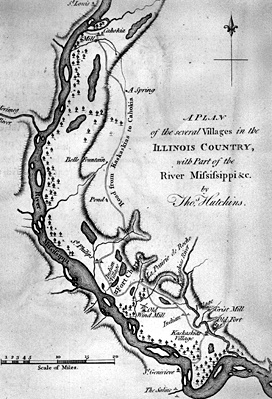 The first Europeans to visit Illinois were the French explorers Louis Jolliet (Jolliet, Louis) and Jacques Marquette (Marquette, Jacques) in 1673, when they explored the Mississippi (Mississippi River) and Illinois (Illinois River) rivers. Near present-day Peoria, René-Robert Cavelier, sieur de La Salle (La Salle, René-Robert Cavelier, sieur (lord) de), established the first French foothold, Fort Crèvecoeur, and built Fort Saint Louis near Ottawa. In the 1760s, after the French and Indian War, France ceded to Britain its claim to lands east of the Mississippi. The following years were uneasy—British policy was unfavourable to the area's economic development, Native Americans resented the British presence, and settlements were without civil government. By 1773 the number of settlers had declined to about 1,000 plus a few hundred slaves.
The first Europeans to visit Illinois were the French explorers Louis Jolliet (Jolliet, Louis) and Jacques Marquette (Marquette, Jacques) in 1673, when they explored the Mississippi (Mississippi River) and Illinois (Illinois River) rivers. Near present-day Peoria, René-Robert Cavelier, sieur de La Salle (La Salle, René-Robert Cavelier, sieur (lord) de), established the first French foothold, Fort Crèvecoeur, and built Fort Saint Louis near Ottawa. In the 1760s, after the French and Indian War, France ceded to Britain its claim to lands east of the Mississippi. The following years were uneasy—British policy was unfavourable to the area's economic development, Native Americans resented the British presence, and settlements were without civil government. By 1773 the number of settlers had declined to about 1,000 plus a few hundred slaves.In 1778, during the American Revolution, the capture by American forces of Kaskaskia, the British seat of government in the region, made Illinois a county of Virginia. The first settlement on the site of Chicago was made in 1779 by the black pioneer Jean-Baptist-Point Du Sable (Du Sable, Jean-Baptist-Point). On July 4, 1800, the Northwest Territory was divided, and the Illinois country was made a part of Indiana Territory; Illinois Territory was formed in 1809 by dividing Indiana Territory, and Illinois attained statehood nine years later.
Early years of statehood
 In 1818, two-thirds of the population lived along the eastern and western edges of southern Illinois and primarily engaged in the fur trade. The final conflict with Native Americans was the Black Hawk War in 1832.
In 1818, two-thirds of the population lived along the eastern and western edges of southern Illinois and primarily engaged in the fur trade. The final conflict with Native Americans was the Black Hawk War in 1832.Southern and central Illinois remained the more heavily settled areas of the state during the early 19th century. In 1848 the Illinois and Michigan Canal was completed, linking the waters of the Illinois River with Lake Michigan (Michigan, Lake) and thereby the Mississippi River and Lake Michigan watersheds. The canal formed part of the journey for settlers and travelers from the East Coast, who reached Chicago via the Erie Canal and went on to points south and west. With rail expansion many towns became prosperous. The Cumberland Road, leading westward from Maryland and terminating at Vandalia, brought many settlers to Illinois.
The Illinois constitution of 1818 gave blacks the status of indentured servants, and slavery would have been legalized except for fear that such a move would prevent admission to the union. In 1824 Illinois voters rejected a proposal for a constitutional convention whose implicit purpose was to legalize slavery. Following the heavy influx of Yankees (Yankee) into northern Illinois during the 1830s and '40s, which offset the prevailing Southern, proslavery attitudes, abolitionist sentiment translated itself into the constitution of 1848, which abolished slavery and forbade the importing of slaves. However, repressive laws limiting the rights of African Americans remained part of Illinois law.
When the Civil War broke out, northern Illinois remained loyal to the Union and to the Illinoisan in the White House, Abraham Lincoln (Lincoln, Abraham). A movement to ally southern Illinois with the Confederacy failed. Some 250,000 Illinoisans fought for the Union; among them was its most able general and a future president, Ulysses S. Grant (Grant, Ulysses S.).
Economic and social maturation
Chicago's great fire of 1871 was only a temporary deterrent in the city's progress toward becoming an industrial colossus. The great need for workers in its mills, rail yards, and slaughterhouses was filled by both European immigrants and freed blacks who had come to Illinois beginning in the 1860s. Until well into the 20th century, Illinois was a main focus of the American labour movement. Two events in Chicago, the Haymarket Riot of 1886 and the Pullman Strike of 1894, became landmarks in the militant rise of the unions.
At the same time, Illinois was becoming a pioneer in social legislation, with a state board of health created in 1877; a compulsory school-attendance law in 1883; a “sweatshop act” providing for factory inspections and restrictions on child labour in 1893; and a work limit for children of 8 hours per day and 48 hours per week, also in 1893. The World's Columbian Exposition, held in Chicago in 1893, was America's first international exhibition of the vast technological and scientific strides it had made during the 19th century.
Progress and politics since 1900
During the decades up to and including the 1920s and '30s, the name Chicago became an international byword for bootleg liquor, gangsterism, and organized crime—epitomized in the notoriety of Al Capone (Capone, Al). Downstate Illinois was also notorious as a region of violence. “Bloody Williamson” county was the site of a feud, beginning in 1868, among five families of Tennessee and Kentucky origin. A dispute over a card game in a tavern near Carbondale grew into an eight-year vendetta fought by ambush or nighttime murder in barnyards, bars, and country stores. This violent tradition continued into the 1920s with the racist crusades of the Ku Klux Klan, the coal strikes, and the wars among the Shelton, Birger, and other bootlegging gangs.
Amid the violence and scandals that rocked state and municipal governments in Illinois, there was tremendous economic and cultural growth. A reorganization of state government in 1917 brought more than 100 independent agencies and commissions under the governor and became a model for many other states. Chicago became the country's second largest city in the 1880s, and in 1933–34 its Century of Progress Exposition drew attention again to further industrial achievement. In 1942 the world's first self-sustained atomic chain reaction was set off at the University of Chicago (Chicago, University of), ushering in the atomic age.
Since the Civil War, intense competition between the Republican (Republican Party) and Democratic (Democratic Party) parties has characterized the political life of Illinois. This factor and the state's large electoral vote make it a significant battleground in presidential elections. The three distinguishable political regions are Chicago, which is heavily Democratic; Chicago's suburban metropolitan area and the rich farmlands of north and central Illinois, which are strongly Republican; and southern Illinois, which may swing one way or the other. Today the two parties have almost equal strength statewide.
Throughout the state's history both Democratic and Republican officials have been so frequently the target of corruption and fraud that Illinois politics has gained a checkered national reputation. The state has not had as governor a dominating personality like Wisconsin's Robert La Follette (La Follette, Robert M), who changed the political climate of that state so that the public would expect and demand integrity. Many state and local officials have served prison time, and three governors in the late 20th and early 21st centuries have been convicted of federal felonies.
From 1955 until his death in 1976, Mayor Richard J. Daley (Daley, Richard J) of Chicago built up enormous statewide—and nationwide—power in the Democratic Party, largely through his administrative control of all city and, effectively, Cook county departments and their patronage. Court decisions limiting the awarding of jobs as political rewards have diminished the power of the Chicago mayor and the governor. Since Illinois has less rigid campaign funding laws than most states, a system has evolved in which the speaker of the House of Representatives and the president of the Senate have great power because they see to the funding of the legislators. This has resulted in a balance of power among the legislative leaders, the governor, and the mayor of Chicago.
James R. Thompson, a Republican from Chicago, was first elected governor in 1976 and was reelected for four consecutive terms, a record in the history of the state. During most of that period he was faced with a Democratic-controlled House and Senate. As a result, Thompson used his extensive veto powers—including total veto, line-item veto, appropriation-reduction veto, and the amendatory veto—to influence legislation.
After his election as governor in 1990, Jim Edgar followed a more fiscally prudent path than his fellow Republican Thompson. Edgar, aided somewhat by a healthy national economy, put the state's fiscal house in order and during the last two years of his administration increased funding for education. George Ryan, a conservative Republican, succeeded Jim Edgar as governor in 1999. He startled many of his followers by visiting Cuba under Fidel Castro (Castro, Fidel)'s reign, becoming the first U.S. governor to do so, and by essentially placing a moratorium on the execution of prisoners on death row, pardoning several inmates and commuting the sentences of the rest. However, Ryan was indicted in 2003 and found guilty in 2006 for a bribery scandal that ended his political career.
In 2002 Rod Blagojevich became the first Democrat to be elected governor in more than 25 years; he was reelected in 2006. In November 2008 Illinois's junior U.S. senator, Democrat Barack Obama (Obama, Barack), was elected president of the United States. One month later Blagojevich was arrested on federal corruption charges that included his alleged attempt to obtain personal financial gain by leveraging his authority as governor to fill Obama's vacated Senate seat. The state House of Representatives began impeachment proceedings and in January 2009 voted 114–1 in favour of impeachment. The state Senate unanimously convicted Blagojevich on the charges, making Blagojevich the first Illinois governor to be impeached. The Senate removed him from the governorship and barred him from seeking any political office in the state in the future. Lieutenant Governor Pat Quinn was sworn in as governor on Jan. 29, 2009.
Additional Reading
Federal Writers' Project, Illinois: A Descriptive and Historical Guide (1939, reprinted as The WPA Guide to Illinois, 1983), provides a still-useful overview. Ronald E. Nelson (ed.), Illinois: Land and Life in the Prairie State (1978); and A. Doyne Horsley, Illinois (1986), are good geographic works. R. Dan Neely and Carla G. Heister (comps.), The Natural Resources of Illinois (1987), contains information on climate and biological and geologic features. Geography and history are combined in James N. Adams (compiler), Illinois Place Names, ed. by William E. Keller (1968, reissued 1989). John Clayton, The Illinois Fact Book and Historical Almanac, 1673–1968 (1970), is a comprehensive compilation of political, geographic, and historical information. DeLorme Mapping Company, Illinois Atlas & Gazetteer, 4th ed. (2003), details the state's topography. Paul Kleppner et al., Political Atlas of Illinois (1988), analyzes election returns. Baker Brownell, The Other Illinois (1958), offers a colourful historical portrait of southern Illinois from the early 18th to the mid-20th century; it is supplemented by C. William Horrell, Henry Dan Piper, and John W. Voigt, Land Between the Rivers: The Southern Illinois Country (1973, reissued 1982).Introductions to Illinois history include Roger Biles, Illinois: A History of the Land and Its People (2005); and Richard J. Jensen, Illinois: A Bicentennial History (1978, reissued 2001). The Sesquicentennial History of Illinois series includes Clarence Walworth Alvord, The Illinois Country, 1673–1818 (1920, reprinted 1987); Theodore Calvin Pease, The Frontier State, 1818–1848 (1918, reprinted 1987); Arthur Charles Cole, The Era of the Civil War, 1848–1870 (1919, reprinted 1987); John H. Keiser, Building for the Centuries: Illinois, 1865 to 1898 (1977); and Donald F. Tingley, The Structuring of a State: The History of Illinois, 1899–1928 (1980). Bill Barnhart and Gene Schlickman, Kerner: The Conflict of Intangible Rights (1999); and Taylor Pensoneau, Governor Richard Ogilvie: In the Interest of the State (1997), discuss the lives of two of the state's notable political figures. Clyde C. Walton (ed.), An Illinois Reader (1970), is a retrospective anthology of journal articles on a variety of historical topics. Current research is reported in Illinois Historical Journal (quarterly).
- Émile Meyerson
- Émile Nelligan
- Émile Ollivier
- Émile Roux
- Émile Vandervelde
- Émile Verhaeren
- Émile Zola
- Éon de Beaumont, Charles, chevalier d'
- Épernay
- Épernon, Jean-Louis de Nogaret de La Valette, Duke d'
- Épi
- Épinal
- Épinay, Louise-Florence-Pétronille Tardieu d'Esclavelles, dame de La Live d'
- Épinay-sur-Seine
- Érard, Sébastien
- Érico Lopes Veríssimo
- Étampes
- Étampes, Anne de Pisseleu, duchesse d'
- Étienne Baluze
- Étienne Bonnot de Condillac
- Étienne Boré
- Étienne Brûlé
- Étienne Cabet
- Étienne-Charles de Loménie de Brienne
- Étienne-Constantin, baron de Gerlache